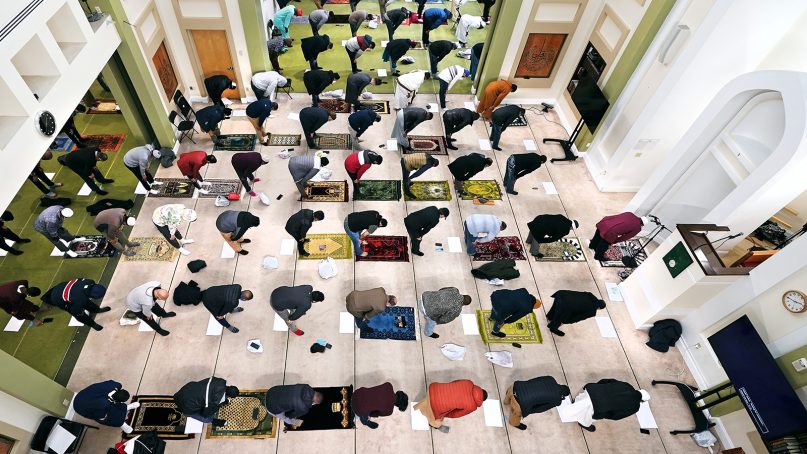(RNS) — Increasing numbers of African American mosques are closing, while the overall number of mosques in the United States continues to grow, according to a new report.
“The American Mosque 2020: Growing and Evolving,” released Wednesday (June 2), shows key changes in Muslim demographics as they relate to places of worship. The report, jointly published by the Islamic Society of North America, the Center on Muslim Philanthropy and the Institute for Social Policy and Understanding, was written by Ihsan Bagby, who produced similar survey reports in 2001 and 2010.
“In 2020, the US Mosque Survey counted 2,769 mosques, which is a 31% increase from the 2010 count of 2,106 mosques. Undoubtedly, the primary driving force for the increase of mosques is the steady expansion of the population of Muslims in America due to immigration and birth rate.”
The report finds congregational prayers held in mosques on Fridays (a practice known as jumah) averaged 410 attendees prior to the coronavirus pandemic in 2020. This was an increase over the 2010 figure of 353. Some 72% of mosques recorded a 10% or more increase in jumah attendance during the reporting period.
Nearly all (98%) of American mosques are run by their local congregations, according to Bagby. He also writes that Muslim congregations are enthusiastic members of their local communities; they are on average more likely to participate in interfaith and civic efforts than other religious groups. Despite this, the report suggests that opposition to the construction of Muslim places of worship reveals anti-Muslim discrimination is more institutionalized than other forms of religious discrimination in the United States.
“The Muslim American community is a very diverse and at any given mosque, when a critical mass is reached, there is often a desire to start another mosque. This is something we have seen in many groups from Afghani-Americans to Somali-Americans. It is also a phenomenon that we find in other religious groups in America as well,” Bagby said.
The 2010 survey found that 17% of America’s mosques were in urban centers. That number decreased to 6% in the 2020 survey due to the growth of new mosques in suburban and rural areas, and the closure of many African American mosques in larger cities. The majority of America’s new purpose-built mosques are found in suburban areas. The shift reflects the demographic footprint of Muslims in America.
RELATED: American Jews and Muslim interfaith groups resume efforts after Gaza battles
A number of factors are leading to the closure of African American mosques, including the death of former Nation of Islam leader Warith Deen Mohammed, who was one of the founders of the African American Sunni Muslim movement. The first wave of conversions in the 1960s and 1970s created new African American Muslim communities. A secondary wave of African American conversions occurred in the early 1990s, spurred by the influence of the film “Malcolm X,” globalization and the prominence of some Muslims in hip-hop culture. As members of the first wave get older, many African American mosques have struggled to remain open.
“Following the death of Warith Deen Mohammed in 2008, the community has never reconstituted itself and that has been a barrier for growth for the African American Muslim community, ” said Bagby.
“African American conversion, while it is ongoing, has plateaued, especially in African American mosques,” he added.
RELATED: Mustafa Akyol argues for Islamic reform from within
The report does not include mosques used by Muslim minority groups such as the Nation of Islam, Ahmaddiyya or Ismaili congregations, in part because Bagby says he was unable to obtain relevant data.
Attendance at mosques remains strong in particular among the 18-34 age demographic and is much stronger than that demographic among Jewish and Christian groups, according to Bagby.
“My colleagues who work on Jewish and Christian congregations say to enjoy it while it lasts, that this (is) not sustainable,” he said. “I think it is too early to say a long-term decline is unavoidable or predetermined.”





